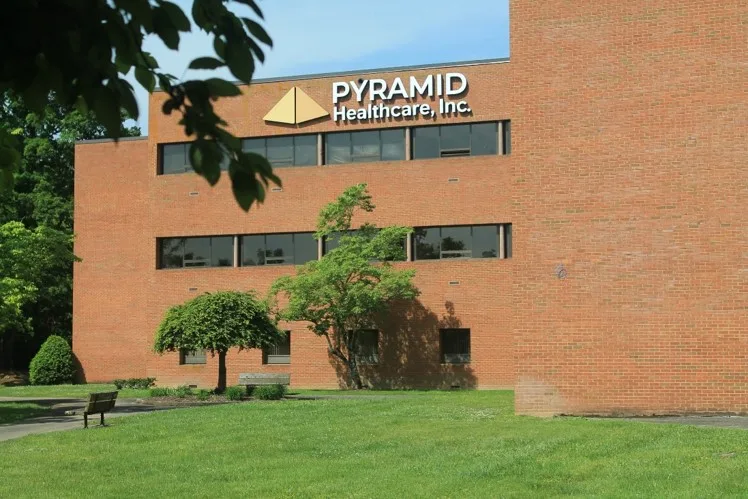Opioid Use in Ohio

According to the Centers for Disease Control, more than 932,000 people have died since 1999 from a drug overdose, and nearly 75 percent of drug overdose deaths in 2020 involved an opioid. Over 10 million people have misused prescription opioids in the past year. Nationally, the opioid crisis claimed 80,411 lives in 2021.
Ohio opioid epidemic statistics as reported by The Ohio Department of Health are:
- Unintentional drug overdoses caused the deaths of 4,050 Ohio residents in 2016, a 33 percent increase from 2015
- Ohio had the fourth-highest overdose death rate in the nation at 29.9 per 100,000 residents
- Unintentional drug poisoning became the leading cause of injury death in Ohio in 2007, surpassing motor vehicle crashes for the first time on record, and this trend has since continued
- There were 5,017 unintentional drug overdose deaths in Ohio in 2020
- The unintentional drug overdose death rate for Black non-Hispanics in 2020 was 55.2 deaths per 100,000 population
- The unintentional drug overdose death rate for white non-Hispanics in 2020 was 46.8 deaths per 100,000 population
- In 2020, Black non-Hispanic males had the highest drug overdose death rate in Ohio compared with other sex and race/ethnicity groups
- Unintentional drug overdose deaths increased by 25 percent from 2019 to 2020.
- In Ohio, fentanyl was involved in:
- 83 percent of all heroin-related overdose deaths
- 80 percent of all cocaine-related overdose deaths
- 79 percent of all psychostimulant/methamphetamine-related overdose deaths
To better understand the depth and reach of the epidemic as reflected in the opioid overdose death statistics, the state of Ohio has launched data dashboards to track and report on overdose deaths and other substance-use-related material and data for all 88 counties in the state. As part of a grant from the National Institutes of Health (NIH), The Ohio State University has partnered with the University of Cincinnati, Case Western Reserve University, Ohio University, the University of Toledo, Wright State University and RecoveryOhio to launch the NIH Heal Initiative, a study that tests the integration of prevention, overdose treatment and medication-based treatment in communities hardest hit by the opioid crisis.
What Are Opiates and Opioids?
Opiates are drugs that are made from some varieties of the poppy plant. Opiates produce euphoria and slow respiratory function by activating certain receptors in the central nervous system. High doses can quickly slow respiration and lead to death.
Opioids and opiates are not the same. Opioids are synthetic (not found in nature) or partially synthetic, while opiates are directly derived from the poppy plant. Heroin, morphine and codeine are opiates, though these are often formulated with synthetic materials when purchased illegally.
Synthetic opioids were originally prescribed to patients to treat moderate to severe pain. They are listed under Schedule II of the Controlled Substances Act, meaning that they have a medical value yet a high potential for abuse.
Common opioids:
- Hydrocodone (Vicodin)
- Oxycodone (Percodan, OxyContin)
- Hydromorphone (Dilaudid)
- Heroin (Diacetylmorphine)
- Fentanyl
Opioids are meant to suppress pain and reduce anxiety and can be taken by mouth, smoked, snorted or injected.
Dangers of Opioid/Opiate Misuse
Opioid misuse can create many health-related issues and oftentimes leads to death. It can also create other addictions, with an estimated 4-to-6 percent of people who misuse prescription opioids transitioning to heroin when their prescription runs out or becomes too expensive.
Dangers associated with excessive opioid use include:
- Infectious disease from using intravenous needles
- Respiratory arrest and death from overdosing
- Loss of employment
- Nausea
- Sensitivity to pain
- Excessive sweating
- Depression
Fentanyl
Fentanyl is a synthetic opioid that is prescribed by doctors to treat severe pain after surgery or for late-stage cancer. The Centers for Disease Control states that fentanyl is up to 50 times stronger than heroin and 100 times stronger than morphine. Illicit fentanyl is often mixed with heroin, methamphetamine, cocaine and xylazine, often without the user’s knowledge, putting them at a much higher risk for overdose and death.
According to the United States Drug Enforcement Administration (DEA):
- 2mg of fentanyl has the potential to be lethal, particularly for people with no opioid tolerance
- Nationally, opioid deaths rose 38 percent from January 2020-January 2021
- Fentanyl is involved in more deaths of Americans under the age of 50 than any other cause of death, including heart disease, cancer, homicide, suicide and other accidents
The U.S. Food and Drug Administration (FDA) has approved certain opioid and non-opioid medications and treatments to help patients cope with the symptoms of fentanyl withdrawal.
Treating Opioid Use Disorder (OUD)
Medications for Opioid Use Disorder (MOUD) are also known as medication-assisted treatment (MAT). MOUD is an evidence-based treatment option for individuals recovering from opioid addiction and supports the individual during the early stages of recovery. MOUD combines medications with behavioral therapy to treat the whole person, which reduces the chances of relapse and supports the individual in long-term recovery.
While MOUD sometimes involves the use of medications that are classified as opioids, proper prescribing and use of MOUD do not produce the same “high” or likelihood for misuse or addiction.
Opioid Treatment at Pyramid Healthcare in Ohio
Pyramid Healthcare’s outpatient facility in Dayton, Ohio, treats OUD and other substance use disorders. We also treat primary mental health disorders and co-occurring disorders. Our 360° approach to treatment means that we treat the whole person, not just the symptoms.
Our facility in Moraine, Ohio, offers:
- Mental health day treatment (MHDT)
- Psychiatry and medication management
- Ambulatory detox (also known as withdrawal management)
- MOUD
The Pyramid Healthcare system only uses evidence-based treatment modalities and our programs are trauma-informed to get to the root causes of mental health and substance use disorders. To talk to our admissions team, call (937) 637-1860 or click here.




